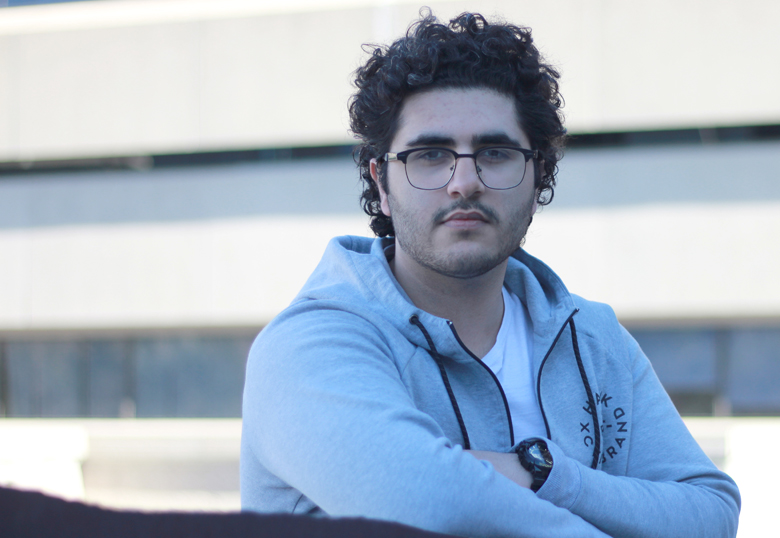University of Lethbridge first-year science student Arashk Ghasroddashti had no expectations when he presented recently his research work at the 2018 Undergraduate Neuroscience Conference at the University of Alberta. When he was awarded the prize for best poster presentation, it further ignited his passion for neuroscience research and validated his decision to begin his post-secondary career at the U of L.

Ghasroddashti, who was born in Iran and emigrated with his family to Canada at the age of two, was initially uninterested in attending his new hometown’s university. Despite living in Lethbridge since his Grade 5 year and completing high school at Lethbridge Collegiate Institute, he had his sights set on the big city.
“I was pretty much dead set on going to the University of Toronto or University of British Columbia and applied to a few other places as well but decided that I really wanted to do research as soon as possible, so coming to a smaller university might be better for that purpose,” he says, now in his second year at U of L.
He was right. Ghasroddashti admired the research being conducted by the U of L’s Dr. Majid Mohajerani, so he contacted him before even enrolling and asked if he could sit in on one of his classes. The response he received confirmed his future path.
“People think that these professors will just ignore your emails but that’s not how it works here,” says Ghasroddashti. “They are always looking for undergraduate students and they want to help students get involved in research. Dr. Mohajerani was really responsive to that email, and very receptive to my interest and even offered for me to come to the Canadian Centre for Behavioural Neuroscience for a tour of the building.”
When Ghasroddashti began his studies at the U of L, majoring in neuroscience with a minor in computer science, he quickly immersed himself in research. Working on master’s student Behroo Mirza Agha’s thesis study, Ghasroddashti participated in a project examining the role of the neurotransmitter acetylcholine and its effect on motor skill improvement in mice following stroke events.
“To investigate this, we analyzed the forelimb movements of two groups of mice after stroke; one group was stimulated so that they had increased levels of acetylcholine in the brain, and one was not,” says Ghasroddashti. “We found that motor skill improvement after stroke occurred much sooner in the stimulated mice than it did in the unstimulated mice. These results are important because they provide insight into how post-stroke motor skill recovery can potentially be improved in the future, specifically as it relates to the role of acetylcholine.”
Ghasroddashti presented the project and paper to judges at the conference, taking questions on various aspects of the study and defending the results.
“I have to give a ton of credit to Behroo for her mentorship, she is really responsible for my understanding of the project,” he says.
For Mirza Agha, the opportunity to ignite a passion for research in a first-year student was extremely satisfying.
“I watched his transformation from a novice first-year undergraduate to an intellectual self-initiative competent student,” she says. “Good students ask questions and Arashk was fearless in asking questions and clarifying the concepts, something that undergraduate students typically hesitate to do.”
The experience further solidified Ghasroddashti’s desire to continue in the field of neuroscience and has inspired an interest in medical school down the road. He credits the Mohajerani lab and its collaborative nature and breadth of study as a key inspiration.
“In addition to the clinical neuroscience project I took part in, which has now come to include Alzheimer’s research, there is work being done on everything from auditory processing to memory consolidation to computational neuroscience and data processing,” he says. “If you have an interest, you need to get in touch with a professor. Understand what that professor is doing and what their students are doing. Show an interest, take a course, go online and read the summary of the professor’s work. The opportunities are there if you really want them.”
